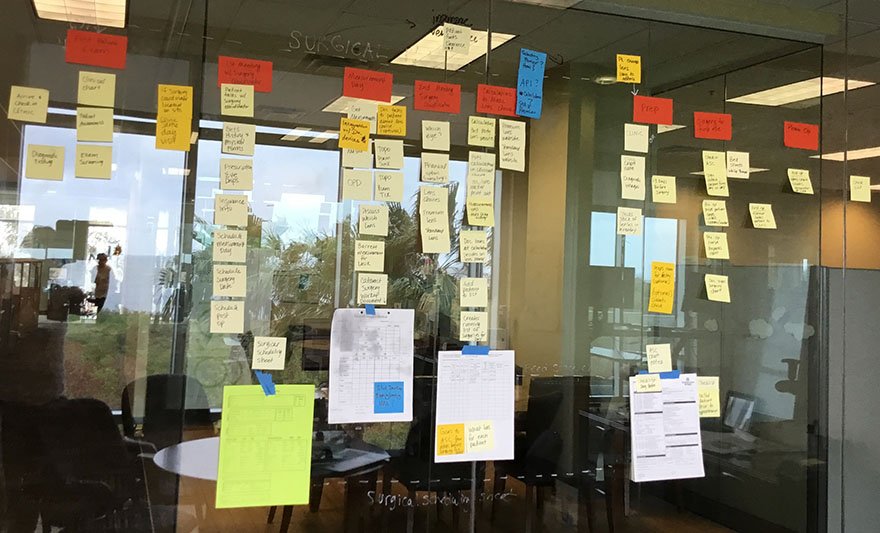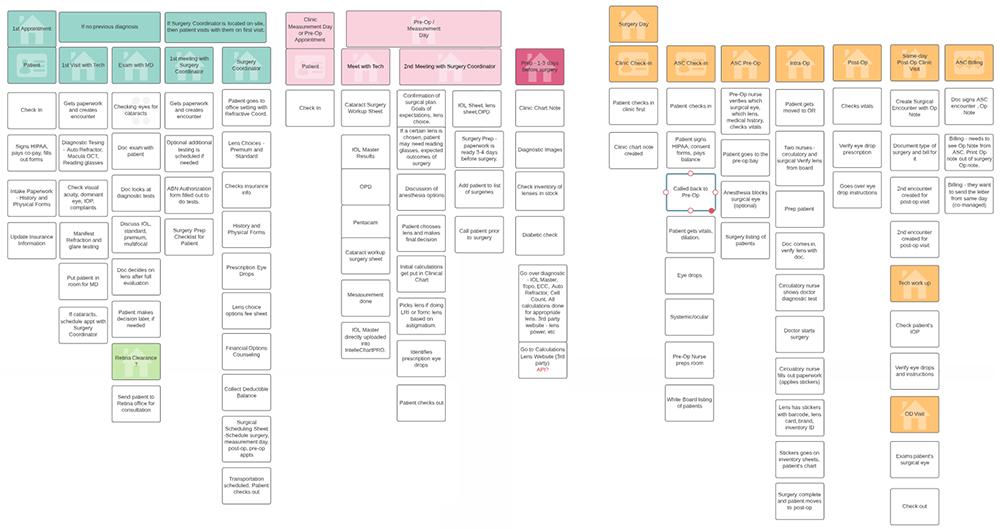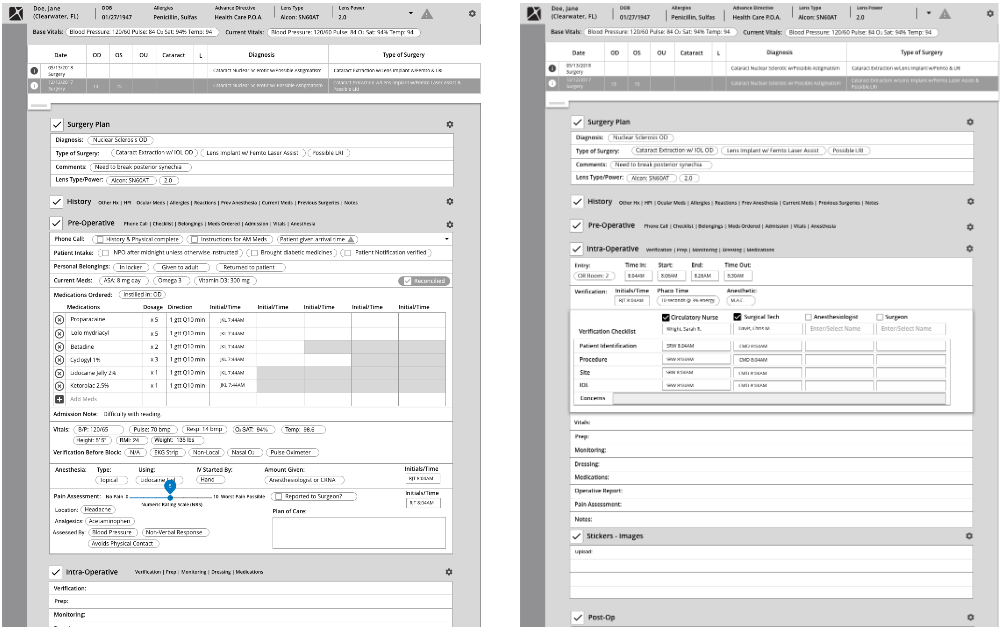Ambulatory Surgery Center Chart
The beginning of understanding what is needed for an ambulatory surgery center chart.
Problem to solve and hypothesis
There was a need to add an Ambulatory Surgery Center (ASC) chart to the ophthalmology product offerings. It was a brand new initiative so I began the process with user research. First, I wanted to fully understand what the needs are from an ASC user standpoint. I had the opportunity to do research at four local ASC surgery centers in Tampa, FL and one very large ASC in New Jersey.
My specific role in the project and how I collaborated with others
Lead product designer, VP was my role at the time. At the time, I had only hired one other designer as it was the start of the process for building a design team. As for this project, I was the sole designer and collaborated with a product owner, product manager, engineering lead and the chief medical officer of the company. I did onsite research with the VP of product and the product owner for the ophthalmology charting application. We did inspected three different ASC locations. We interviewed and observed technicians, nurses, physicians and surgeons to learn about their processes. We also observed cataract surgeries and the billing department processes to see how they were using the software.
How we came to the proposed solution (Discovery)
After each research visit, we went back to the drawing board and started to map out some flows to visualize what we saw at each visit. The first step was to understand the flow and touch points for each user. What is shown at the right of this is only a fraction of the mapping we actually did by the end of this research project. We even visited a few facilities that did LASIK and followed their processes to see if our ideas could help their workflows in their facilities.
How solution will solve the problem (Framing)
One persona is depicted in this exercise. A 51 year old mother and wife who was worried about the loss of her vision and the steps she had to take to learn her condition was in fact, cataracts. I created a storyboard to tell Laura's story, create a profile for her and a patient journey map to depict this process.
We visited several ASC locations to gather information at each location and their documentation. We combined all of that data together to create one common ASC chart idea. Then after building some wireframes, we began user testing and co-design sessions (that included myself and the product owner with the users) each week to make sure that it was a user-centered design effort throughout the product process. From this research effort we found that about 50% of the locations were still using paper charts. I built a clickable prototype using InVision to test with the users so that we could continuously make improvements to it together.
I began with quick sketches on the whiteboard with the team, while creating the elements in Sketch. I incorporated atomic design using Sketch, while building a component design library. I worked with the engineering teams to create a common library of components using Angular Material. This was after I created a style guide to get things started.
Proposed Solution
After all of the user feedback, the product was ready for the engineers to pick up in the next set of spring iterations. The prototypes were validated through user testing facilitated by myself and the product owner each week. It was such a successful process and product delivery, that is now a part of the company's product offering.
This is the surgeon’s view of what the patient surgery need is.
Challenges faced
There were a number of ambulatory surgery centers still using paper charts. Not every ASC was the same, so we had three different user groups in our rotation to help us co-design and validate the cohesive ASC chart design.
How project affected users and business
This product ended up being an increased form of revenue for the company and a valuable product offering to its users. The company has fully integrating the ASC chart to clinic electronic health records and Practice Management systems.









